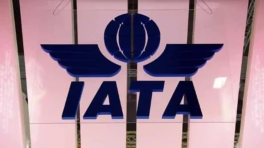Tremors in Sylhet might hint at bigger quakes: Are we ready?
Experts say that in earthquake prone areas, big earthquakes occur every 100 years. In case of Bangladesh, 120 years have passed since a heavy tremor originating from Dawki Fault jolted the area

In two days, six successive mild earthquakes have shaken Sylhet city and adjacent areas, forcing people to leave their homes in panic.
Bangladesh Meteorological Department confirmed that one of the tremors was of the magnitude of 4.1 on the Richter scale. Locals said they felt more jolts.
Experts say it could be a warning sign of a major earthquake.
In the meantime, Sylhet City Corporation has sealed off 24 vulnerable buildings for 10 days after six earthquakes hit, leading one of the buildings to tilt. It is to be noted that specialists from the Shahjalal University of Science and Technology flagged 35 buildings as vulnerable in 2005.
Sylhet has a history of earthquakes
Although Bangladesh has not experienced a major earthquake in over a century, recently an escalation in seismic activity has been observed. A magnitude six earthquake was felt on April 28 this year. The epicentre was reported at Dekhiyajuli in Assam's Sonitpur district. Three earthquakes were felt in 2020 - a magnitude 4.4 on November 3, a magnitude 5.8 earthquake on June 22 and a magnitude 5.1 earthquake on June 21.
A strong earthquake of 8.6-magnitude shook Assam on August 15 in 1950, killing 1,526 people. Another 8.1-magnitude quake, known as 'Great Indian earthquake,' hit Assam in 1897 which caused extensive damage in about 3,75,550 square kilometre area.
In Sylhet district alone, 545 buildings collapsed and a large number of people died. As a result of that earthquake, huge haors, beels and reservoirs were created all over Sylhet.
The casualties were less because of the low density of population and fewer numbers of concrete structures at that time. Experts say that in earthquake prone areas, big earthquakes occur every 100 years. In Bangladesh, 120 years have passed since a heavy tremor originating from Dawki Fault.
Bangladesh's vulnerability to earthquake
Bangladesh is situated in a high risk zone for earthquakes. The observatory at BUET recorded 86 tremors over magnitude four from January 2006 to May 2009. These minor tremors indicate the possibility of heavy shakes.
Dhaka is more vulnerable to earthquakes for its geological location and population density. According to the earthquake disaster risk index, Dhaka is among the 20 most vulnerable cities in the world.
Comprehensive Disaster Management Programme's (CDMP) study said, some 72,316 buildings in the capital will be completely damaged and 53,166 others will be partially damaged in case of a 7.5 magnitude shake.
There will be an economic loss of about $1.1 billion resulting from only structural damage in case of a 7.5-magnitude earthquake. Economic loss due to damage of structures will be $ 1.07 billion in case of a 6-magnitude earthquake.

Some 30 million tonnes of debris, equal to 28,80,000 truckloads (25 tonnes per truck), will be generated if a 6-magnitude earthquake jolts the city. According to the study, at least 10 major hospitals, 90 schools in the capital will be destroyed completely and another 241 hospitals and clinics, 30 police stations and four fire stations will be partially damaged in case of a 7.5-magnitude quake.
According to a seismic zoning map (BUET), 43% area in Bangladesh can be rated high risk, 41% moderate and 16% low. The high risk group includes major population belts such as Chattagram, Dhaka, Rangpur, Bogra, Mymensingh, Cumilla, Rajshahi and Sylhet.
An Oxfam study from 2012 showed there were more than 130 instances of minor seismic disturbance during 2007 - 2009. Eight tremors with magnitude of 4 on the Richter scale occurred during 2000 - 2010.
In this case, the Rana Plaza collapse could be an example. It took 21 days to complete the search and rescue operation of a single building collapse. One wonders, what will happen if a moderate quake hits the city and destroys as many buildings as estimated?
Is Bangladesh ready to face a big shake?
The Government of Bangladesh has taken a number of initiatives to minimise the damages caused by a possible havoc. By analysing the seismic data, earthquake risk maps of Dhaka, Chattogram, Mymensingh and Sylhet City Corporations have been prepared and similar mapping projects are underway for some of the sub-regions.
The Standing Orders on Disaster (SOD) was updated in 2019 where responsibilities of the relevant ministries, departments and agencies were defined. Ward level disaster management committees have also been introduced.
It took 21 days to complete the search and rescue operation after the Rana Plaza collapse. One wonders, what will happen if a moderate quake hits the city and destroys as many buildings as estimated?
The National Contingency Plan has been prepared in participation of emergency response agencies including Fire Service and Civil Defence (FSCD), Arms Forces Division (AFD), Department of Disaster Management (DDM), and Cyclone Preparedness Programme (CPP).
The Ministry of Housing and Public Works has been able to have Bangladesh National Building Code approved after five years of wait. Back in 2012, CDMP launched a programme to build 62,000 urban volunteers to conduct immediate rescue operations when disaster strikes.
Are these measures enough?
Though the government took several initiatives, the preparedness is too far behind the scale of the country's vulnerability, which was evident in the Rana Plaza collapse, fire incidents in Banani, Chawkbazar or Nimtoli.
Citizens have immense knowledge gaps regarding the to-dos during the tremors. Out of 62,000 urban volunteers, only around 37,000 have been trained by FSCD while the programme is now obsolete.
Lack of coordination among the responding agencies is a big issue. Engagement of NGOs and private sectors in response mechanisms are far away. Debris management will be another big issue if tremor hits.
A single Rana Plaza generated about 7,000 tonnes of debris. If a shake hits like 1897, about 300 million tonnes of debris will be generated and the first task would be to clear roads leading in and out of cities before any rescue drive could commence.
Also, a contingency plan is yet to be tested. Standard Operating Procedures (SOP) for agencies are yet to be developed.
Way forward
The question arises, to what extent is the government ready to manage the worst-case scenarios following a disaster? A set of recommendations can be suggested:
A coordination platform should be in place involving different government and non-government agencies. Extensive mass awareness programmes must take place on a regular basis. The awareness events must cover all strata of society including city dwellers, government officials, municipality officials, politicians, engineers, architects, designers, builders and medical personnel.
Government must enforce the proper implementation of the National Building Code. Initiatives should be taken to demolish old and high risk buildings as a first step towards minimising casualties followed by the retrofitting to make vulnerable buildings shake tolerant.
Capacity enhancement of emergency response agencies is a must in the area of both skill and equipment. Coordination among the agencies is a priority.
Disaster Risk Reduction measures should be institutionalised at institutions, community and household level.
Greater involvement of public and private sectors should be ensured. In the area of mass awareness, the media could play a vital role. Systematic engagement of media is needed.
In case any big tremor strikes the country, only development of a culture of resilience can contribute to reduction of the loss of life and property.
Mohammed Norul Alam Raju is a development practitioner. He can be reached at [email protected]
Disclaimer: The views and opinions expressed in this article are those of the authors and do not necessarily reflect the opinions and views of The Business Standard.


 Keep updated, follow The Business Standard's Google news channel
Keep updated, follow The Business Standard's Google news channel














